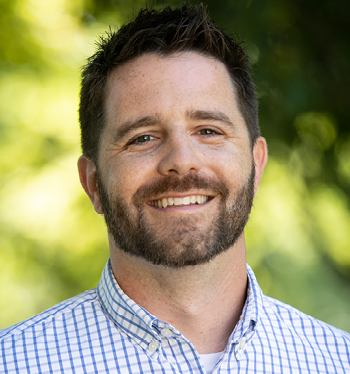Ryan Seth Jones, Assistant Professor, Middle Tennessee State University

If any year has highlighted the need for a data literate society, and the long road we before us to get there, it’s been 2020. A global pandemic with a new virus required scientists around the world to make predictions and decisions based on a diverse set of quickly evolving and competing data models. The uncertainty in the models was publicly visible because of the widespread policy implications. However, without widespread understanding about how researchers build data models and make claims in the midst of uncertainty most were forced to adopt either “trust the scientists” or “the scientists don’t know that they are talking about” positions. Very few were able to honestly engage with the models and claims that were turning the entire world upside down, creating a crisis of shared trust in the institutions that use science to guide policy.
But honest engagement with the models is a challenge because making inferences with data is an interdisciplinary activity that requires the coordination of a diverse set of concepts and practices. This is because statistics is a “meta-discipline” (Wild, Utts, & Horton, 2018) that reaches across multiple communities. Practices and ideas are stabilized across diverse communities by a “coherence of reasoning and activities that make sense in light of each other and in light of the practice’s aim” (Ford, 2015, p.1045). This coherence requires significant, interdisciplinary knowledge of the phenomenon under investigation, the data model, and the relationship between them that justifies the inferences.
This interdisciplinary knowledge is why making inferences with data is a learning goal for diverse STEM communities. However, these communities are often separated in schools by institutional and disciplinary boundaries. For example, mathematics and science exist in separate realms, and students regularly struggle to see how one is related to the other. This means that although different disciplines within the STEM umbrella have increased the focus on supporting students to make inferences with data, it is unlikely that students will develop the necessary coherence of ideas and practices that stabilize professional inferential practice. This is problematic, because “In data analysis, context provides meaning” (Cobb & Moore, 1997, p. 801). But if knowledge about a phenomenon and the statistical ideas and practices used to generate that knowledge live in isolation from each other in schools then students are likely to only superficially engage with the context of an inquiry in a math class, and to only superficially engage with data models in a science class.
It’s not simply neglect that has led to this fragmented approach. Little is known about how to productively integrate ideas and practices across diverse STEM disciplines (Honey, Pearson, & Schweingruber, 2014). Integration alone does not necessarily create better learning opportunities, and can at times impede learning because of the complexity of interdisciplinary settings. So, careful design is needed to provide learning opportunities for students to build systems of coherent ideas and practices related to making inferences with data.
Our project, CAREER: Supporting Model-based Inference as an Interdisciplinary Effort between Mathematics and Science, is working to coordinate learning goals across mathematics and science classes in middle grades in order to support students to see increasingly sophisticated data modeling techniques as tools to generate claims about ecological systems. In order to do this, we are mapping the data models necessary to generate claims about the learning goals in 6th and 7th grade standards. This often creates moments of negotiation when goals across different communities conflict with one another. For example, the 6th grade science teachers at our partner school are asked to engage students with data to make claims about genetics and heredity. However, in order to honestly engage with this idea, students need to make use of ideas related to probability to model the chance pairing of alleles. The mathematical ideas are in the 7th grade mathematics standards which creates a situation in which students are asked to model and reason about a scientific phenomenon that requires mathematical and statistical ideas they will not encounter for another year.
Although this context may seem far from the COVID-19 models guiding scientists today, there are strong conceptual similarities about the nature of uncertainty and the game of modeling chance to inform inferences in the midst of variation in outcomes. This means that finding ways to support students to build coherence across ideas like these must be a priority for researchers in STEM education. We need a better understanding of how ideas and practices across disciplines fit together, where the conflicts exist to coherence, and design principles for better supporting students to build coherence. Although it’s not reasonable to expect all citizens to have the expertise necessary to understand the details of every research community, it may be possible to support people to understand fundamental principles related to making inferences with data that allow for critical and honest engagement with scientific models and claims. This may support much needed trust in the institutions that use these approaches to make knowledge claims and create policy.
References
Cobb, G. W., & Moore, D. S. (1997). Mathematics, statistics, and teaching. The American Mathematical Monthly, 104(9), 801-823.
Ford, M. J. (2015). Educational implications of choosing “practice” to describe science in the Next Generation Science Standards. Science Education, 99(6), 1041-1048.
Honey, M., Pearson, G., & Schweingruber, H. A. (Eds.). (2014). STEM integration in K-12 education: Status, prospects, and an agenda for research (Vol. 500). Washington, DC: National Academies Press.
Wild, C. J., Utts, J. M., & Horton, N. J. (2018). What is statistics?. In International Handbook of Research in Statistics Education (pp. 5-36). Springer, Cham.